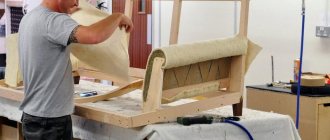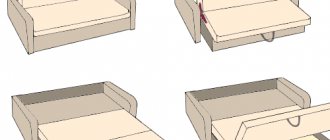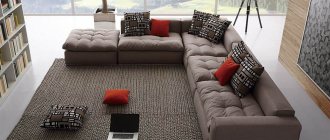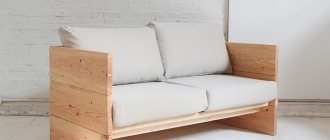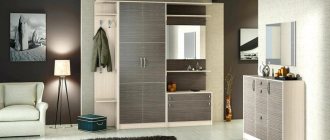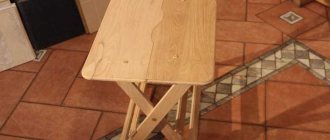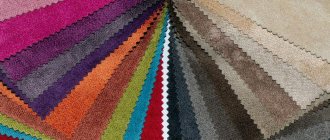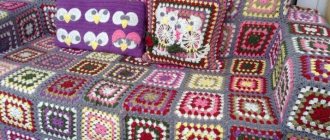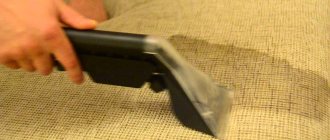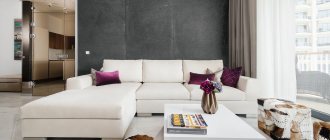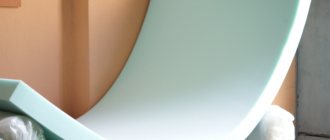Modern European covers for sofas and armchairs will help you update the appearance of upholstered furniture without much expense and protect it from negative influences in the future. Such capes are made of durable and elastic fabrics and are complemented with elastic bands. It is not necessary to choose Euro-covers for a specific sofa: the main selection criterion is the size of the furniture. The shape of the armrests, the presence of headrests or other features of the models do not affect the possibility of using universal Euro blankets. Secondary criteria for selecting products include the type of material from which they are made and the color of the fabric. Owners should also take into account the rules for using and cleaning euro capes: following the recommendations and requirements of the manufacturer will help to easily maintain the attractive appearance of the new product.
Benefits and Features
European-style covers for upholstered furniture are truly universal. Models are distinguished by purpose (chair or sofa) and size. At the same time, the purchased Euro chair cover is suitable for any models of chairs, regardless of their size, back height or seat width. Also, the selected eurocover for a two-seater sofa without armrests can be used to protect any furniture from this category, regardless of its upholstery materials, the presence or absence of legs. This feature of European covers is achieved through the use of auxiliary elastic bands. They allow you to cover old furniture with a cape so that there are no waves or constrictions on its surface. In addition, European covers are made from wear-resistant fabric, which will retain its original appearance for a long time.
Advantages
The main advantage of using a Eurocover is its efficiency. Thanks to such a cover, you can easily and quickly update the look of old upholstered furniture without changing its upholstery. Other advantages of the products include:
- ease of choice (by type and size);
- reliability (the fabrics used for sewing covers are in no way inferior in strength to furniture upholstery, they are resistant to mechanical stress);
- ease of cleaning (in case of contamination, owners will need to remove the cape and wash it in accordance with the manufacturer’s requirements);
- ease of putting on (most models can be put on upholstered furniture in just 5-10 minutes);
- variety of cover designs (due to the use of different fabrics and tailoring in different styles).
Despite the high efficiency of the Euro-cover, it will not be able to hide the unevenness of damaged leather or suede, worn-out (or sagging) filling of upholstered furniture.
Flaws
A significant drawback of Euro-covers for upholstered furniture is their high cost. High-quality and durable models, resistant to damage, which can actually be used even in homes where animals are kept, are expensive. Also, Euro-covers are not suitable for use on leather sofas and armchairs, since they slide over the upholstery without a strong hold. Some buyers find disadvantages in the monotony of the interior created by the use of durable covers. But such a problem can be easily solved by “decorating” upholstered furniture with sofa cushions.
One of the disadvantages is the large number of cheap crafts. Capes that cost less are sewn from less durable fabrics and, accordingly, are quickly wiped off and covered with puffs. Therefore, you should choose models with special attention.
Composition and features of Euro-cases
Euro covers are practical to use and have an elegant appearance. They can renew and preserve upholstered furniture, increasing its service life. Euro-covers are based on elastic fabric that fits upholstered furniture well. They do not slide off the surface of the furniture, leaving a pleasant feeling when used.
The covers are resistant to damage and dirt, they do not absorb dirt and are easy to wash. It is difficult to get a hold on the covers with sharp objects. The hypoallergenic and eco-friendly fabric of the cover does not cause irritation or discomfort.
Another feature of the Eurocase is that it does not change its size during use. This is very practical if the sofa is often unfolded and then assembled.
The disadvantage of using a Euro-cover is that it completely hides the furniture. Below is a photo of a Euro-cover for a sofa.
Materials
Modern Europlaids are made from the following types of fabrics, differing in their characteristics and features:
- chinil: characterized by a soft surface, with different types of weaving it may have virtually no relief or be similar to plush;
- jacquard: dense material with patterned weaving, well suited for use in apartments where pets are kept;
- microfiber: soft and elastic fabric, the best option for protecting the upholstery of the sofa and creating special comfort in the relaxation area;
- pleated: distinguished by a dense weave of threads, has an inconspicuous pattern;
- polyester: a material with a fairly tight weave, but little wear resistance.
Conclusion
The upholstery of the sofa can only be cleaned with a brush and special chemicals, and some dirt eats into the surface and leaves an unpleasant odor. By purchasing a eurocover, you save money on furniture reupholstery and dry cleaning.
Caring for a Eurocover takes less effort. You don’t have to buy a new sofa, but just buy a Euro-cover and completely hide the piece of furniture. A cover on a soft sofa is the best solution to change the style of your interiors and experiment with furniture design.
Color varieties
When choosing the type of colors and patterns for a sofa cover, we must not forget about the features of the room for which the model is being selected. Plain products are optimal for interiors that include patterned trim and eye-catching decor. The most fashionable shades include beige, burgundy, dark blue, light blue and light green. These colors will harmoniously fit into the design of the room and highlight the relaxation area with a sofa. Many europlaids are made from fabrics with patterns: they are more suitable for rooms with a neutral design. Models with large ornaments, in the same color scheme as the background, are suitable for any room. Small, discreet designs and ornaments will be appropriate in both small and large rooms. The presence of a contrasting combination of backgrounds and patterns, regardless of their size, allows the use of Euro-covers in spacious rooms.
There are special “children’s” colors of European covers with animals and plants.
Choice according to interior style
Observing the basic features of the style in which the model will be used will help you choose the right eurocover for your home from the catalog. You can easily select a product using the following directions:
- urban and modern: models without frills in light gray, gray-lilac or light blue colors are good;
- Art Deco: dark models with contrasting light patterns will emphasize the style; it is possible to purchase a model with a frill;
- classic: models in dark green, beige or brown with any tailoring are suitable for the direction;
- Scandinavian: a light gray or white European-style case without frills will complement this style well;
- Provence: light models with dim stripes or small floral patterns are preferred;
- rustic, country and loft: beige, light or rich brown covers are ideal for these styles;
- modern and high-tech: for discreet styles, it is better to choose a dark brown or black case with minimal relief.
How to choose the right cover for your sofa
To choose the right accessory, you need to measure the widest parts of the sofa: the back and seat. The size of the armrests doesn't matter much.
To choose a cover, you need to measure the widest parts of the sofa.
For a small two-seater model with a back length of 140 cm, a cover measuring 120x160 cm is suitable. For three-seater models, a cover of 160x250 cm is suitable, and for corner or modular ones with a length of up to 550 cm.
The design of the eurocover can be absolutely anything: plain, with a small pattern or large patterns.
Selection tips:
- for large furniture, covers with a large pattern or plain models are suitable;
- for small sofas - plain or with a small pattern;
- models with a skirt will fit perfectly into the style of Provence, shabby chic, rococo, baroque, chinoiserie;
- laconic cases without frills will suit classic or modern designs (high-tech, minimalism, loft);
- for a children's room it is better to choose non-staining shades;
- In a small room you can put a sofa with a light cover.
The choice of design and style of sofa depends solely on the preferences of the apartment owner. The most important thing is to find a model that fits exactly in size and will not wrinkle or sag.
Types and sizes
The main difference between the European seat covers produced is their stylistic presentation. Such models can be complemented at the bottom with a neat frill or have a flat side at the bottom, equipped with an elastic band. For sofas, a larger number of European covers of the following types are produced:
- for models without armrests;
- for sofas with armrests;
- for corner upholstered furniture.
The sizes of the covers should be selected according to the size of the seat itself. There are Euro-covers for 2-seater, 3-seater and 4-seater sofas. For corner models, products designed for 4-seat upholstered furniture are suitable. Therefore, when selecting the required European cover for a corner, you don’t have to take into account which side the long part of the seat is located on. The only exceptions are designer sofas made in non-standard sizes.
How to choose and use a case
A correctly selected Eurocover model guarantees its appropriate appearance in a specific interior and long service life. It is recommended to select products according to the following criteria:
| Type of model and its dimensions | Incorrectly measuring furniture will lead to the purchase of a cover that will not fit tightly to the base or will not be able to cover a large sofa. |
| Material | For apartments where animals are kept, it is worth choosing the densest fabrics with increased wear resistance. |
| Stylistics and colors | The chosen model should fit well with the color scheme of the room and complement it attractively. |
After purchasing, it is recommended to wash the cover and only then put it on the furniture. This will allow you to prepare the purchased Eurocap for home use.
How to take measurements correctly?
If you can find a suitable model of European cover for an armchair and sofa by simply assessing its appearance, then you need to be very careful when choosing a product of the appropriate size. To select the correct cape, measure the back of the furniture (top or front). It is better to use a tape measure for work or measure with a centimeter (the help of a second person may be required). According to the obtained measurement, the model is selected:
- with a back length of up to 1.6 m, a Euro-cover for two-seater sofas is suitable;
- a back length of about 2.2-2.5 m will indicate the need to purchase a model for a three-seater sofa;
- If the back length is about 3.5-4 m, you should purchase a Euro-cover for a four-seater sofa.
The sizes of covers for corner sofas are selected in a similar way: depending on the sum of the lengths of the “large” and “small” backrest.
How to wear?
The instructions for putting on European-type covers are quite simple and do not require any special skills. If the sofa is close to the wall, then you must first move it away to put on the cover. The work itself is carried out according to the following scheme:
- The cover unfolds on the surface of the sofa.
- The upper part of the cover is draped over the back, then aligned along one corner, stretched across the back and aligned along the second corner.
- The armrests are covered with fabric: you need to cover them with specially designated volumetric “pockets”.
- The fabric is leveled behind the back of the sofa and along the entire perimeter at the bottom. For corner sofas, there is an elastic insert, which, after straightening the fabric, is tightened and fixed on the inner leg (located between the short and long parts of the sofa).
- Between the seat and back, as well as the seat and armrests, rollers or parallelepipeds made of foam rubber are pushed.
Care Tips
Despite all the practicality of European covers, only proper cleaning and washing will help preserve their original appearance and condition. Basic product care requirements include:
- Removing dust and hair with a vacuum cleaner without using hard brushes (they can damage the fabric).
- Wash by hand or on a gentle cycle in a washing machine without using bleach. It is also recommended to wash the covers without other items (even identical in color).
- For soft “fluffy” covers, washing is carried out only after turning the product inside out.
- Drying of products is carried out naturally. Euro covers should not be dried over heating devices or radiators (otherwise they may become deformed).
- There is no need to iron Euro covers. As a last resort, you can only iron the bottom frill by setting the ironing mode appropriate for the specific fabric.
Advantages and disadvantages of euro sofa covers
Accessories are made from durable fabric that can withstand stretching and mechanical loads.
The fabric for the covers is durable and can withstand heavy mechanical loads.
They are easy to care for: to remove dirt, just machine wash on a delicate cycle at 40 degrees. And then press at minimum speed. You don't have to iron a clean case.
The accessory is machine washable and does not require ironing.
What other advantages does the accessory have:
- assortment of models and colors - you can choose a cover for any sofa;
- affordable price - purchasing a Euro-cover will cost much less than changing upholstery or furniture;
- safe and reliable materials – accessories are made from hypoallergenic materials that do not emit toxic elements; resistant to fading, antistatic (does not accumulate dust);
- elastic – the material is in close contact with the surface and does not stretch over time.
Euro covers are made from elastic hypoallergenic materials.
The product is attached with stretch fasteners, so it sits tightly on the furniture and does not slip due to regular use.
The Eurocase is secured using special fasteners.
The only drawback may be the price. A Euro cover is more expensive than a simple bedspread or blanket, but nevertheless, cheaper than reupholstery.
The product is quite expensive, but less than reupholstering a sofa.
How to make it yourself
Making Europlaid yourself takes a lot of time. It is recommended to use microfiber for work. Sewing a European cover with your own hands is carried out according to the following instructions:
- The distance between the armrests is measured at the junction of the back and seat (even if the bottom or top is slightly wider than the center, the microfiber, due to its elasticity, will stretch and fit as it should). This measurement will be the width of the desired canvas.
- The height of the sofa at the back, the height and thickness of the back, the width of the seat and the height of the sofa from the floor to the edge of the seat are measured (the height of the legs is not taken into account). The sum of the numbers will become the length of the required canvas.
- Based on the measurements obtained, a piece of fabric is prepared.
- The width of the armrest and its length are measured (height from the floor to the top + thickness + height from the top of the armrest to the seat). Based on the obtained dimensions, 2 pieces of fabric are prepared - “capes” for the armrest.
- A pattern is made of the end of the armrest (rectangular or arched type), a pair of blanks are cut out with a margin of 1 cm around the perimeter.
- Covers for the armrests are sewn together: the end part and the “cape” for the armrest. The blanks are put on the sofa (the piece of the end part adjacent to the bottom of the seat remains unsewn with anything!), and a large piece prepared in step 3 is also thrown onto the sofa.
- The blanks for the armrests and the main part of the sofa need to be swept away.
- The completed piece is sewn together on a machine. Then an elastic band is sewn at the bottom along the perimeter of the cover.
